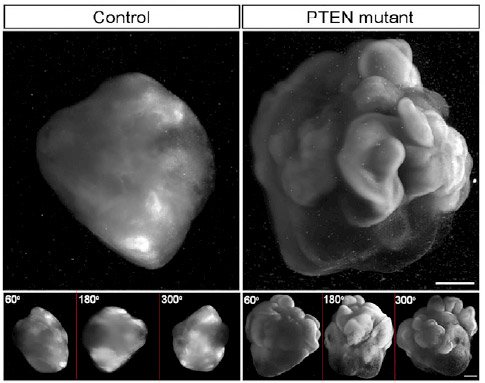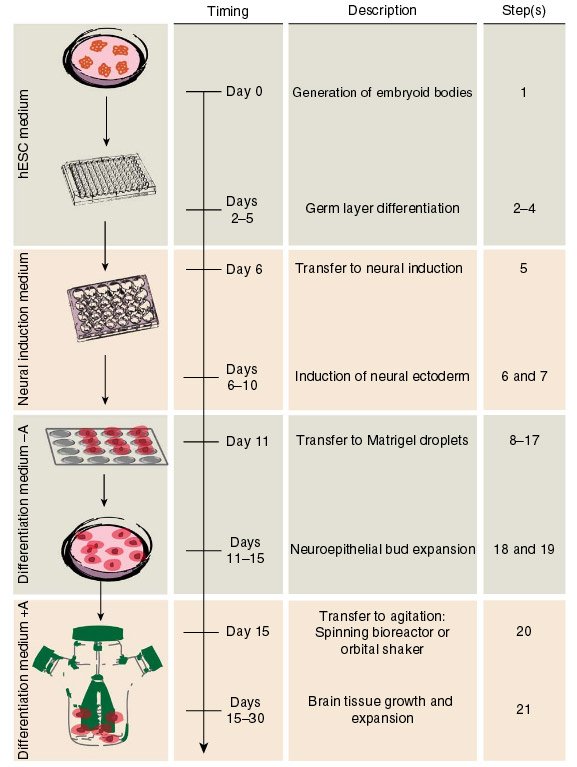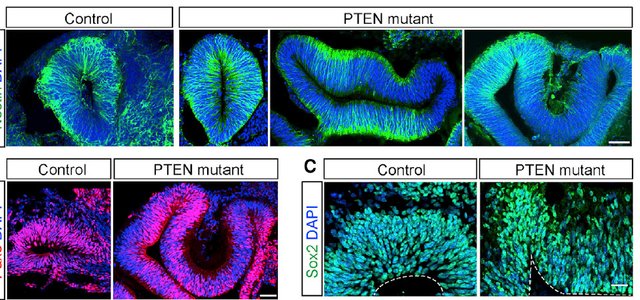Growing Brains and Cracking Brain Disorders with Brain Organoids
Everything that makes us who we are is made possible from a 1.4 kg compound of yellowish tissue.
With a brain, thoughts develop, and we can feel a wide range of positive and negative emotions leading us to both prosperous creativity and horrible evil.
The brain is the most complex organ in nature, with about 86 billion neurons or nerve cells, which need to be created and placed at the right time so that we not only survive, but thrives

source
Most of our knowledge of neuroscience comes from experiments done to nonhuman animals, such as mice and rats, and some of it is from 100 years ago. We can rely on these studies because we share common brain architecture with nerve cells that function the same way. One difference in less evolved brains is a smooth surface, whereas the human brain is highly folded.
What drives the growth and structural formation of our brains?
The journal Cell Stem Cell, published a paper on the 29th of December which provides insight an understanding of a gene pathway that seems to regulate the growth, structure and organization of the cortical brain structure.
Human brain development and its molecular, cellular and anatomical processes can be modeled using many lab grown versions of brain structures called cerebral organoids.
To grow this tiny brain, researchers give a tiny ball of cells nutrients and a bed to grow on. After months of nurturing the stem cell concoction, the culture is similar to the forebrain structure of a 10-week-old embryo. It contains the cortex (folded part) and the choroid plexus (generates cerebrospinal fluid).

Schematic diagram of the cerebral organoid method and timing.
The scientists found "that increased proliferation of neural progenitor cells (NPs) induces expansion of cortical tissue and cortical folding in human cerebral organoids,” says Yun Li, a lead author of study and post-doctoral researcher at Whitehead Institute.
Also, the deletion of another gene, PTEN, "allows increased growth factor signaling in the cell, unleashing its growth potential, and stimulating proliferation.”
With normal progenitor cells, the human organoid developed into clusters with smooth surfaces and features of very early development of the human cortex. Deleting PTEN allows the progenitor cells to continue expanding and delays their differentiation into specific kinds of neurons which is a key feature required for the development of the human cortex.
However, though PTEN deletion in mouse cells does lead to a larger organoid, it doesn't lead to significant NP progenitor cell expansion or folding. This suggests that the PTEN pathway is an important mechanism for controlling the differences in brain structures between species.

source
Although growing brains might make us a bit apprehensive, possibly fearing eventualities like The Matrix where we are all grown in labs, or even like brave new world where we are test tube babies, there are benefits that are more immediate.
Cerebral organoids have laid the foundation for further realistic medical experiments on human tissue, leaving nonhuman animals out of harm. This is definitely something that merits further development. Currently there are no blood vessels included in these organoids, which is something that people can develop to prolong the studying of the organoids.
Eventually it would be good to grow the tiny brain with the same axis of coordination, such as left to right and back to front, as our brains have. Right now they develop randomly so they're all in different orientations. But in a developing human brain, complex signaling systems gives the brain a sense of up-and-down. This can possibly be mirrored to generate tissues in which the chemicals needed to spur cell growth are present.
In looking at brain and neurological diseases and illnesses, rather than looking to mice, rats and other nonhuman animals, we can better understand what is happening in our own brains through using this reproduction and growth of human tissue instead. Rodent studies have failed to yield new treatments on brain disorders, such as schizophrenia and Alzheimer's, and this new research methodology will more accurately represent what we're looking for, and that is a cure for human diseases, not diseases in other animals.
References:
- Scientists Engineer Gene Pathway to Grow Brain Organoids with Surface Folding
- Induction of Expansion and Folding in Human Cerebral Organoids
- Generation of cerebral organoids from human pluripotent stem cells
If you appreciate and value the content, please consider:
@krnel
2017-01-02, 12:30pm

Very interesting. Thank you for sharing. The brain is amazing.
Indeed it is. But this is really good for scientific testing. Actual human tissue and functionality, and leaving the nonhuman animals alone. It's more reliable and will lead to better breakthroughs, as I see it, by using actual human tissue hehe.
Thanks for another informative post.